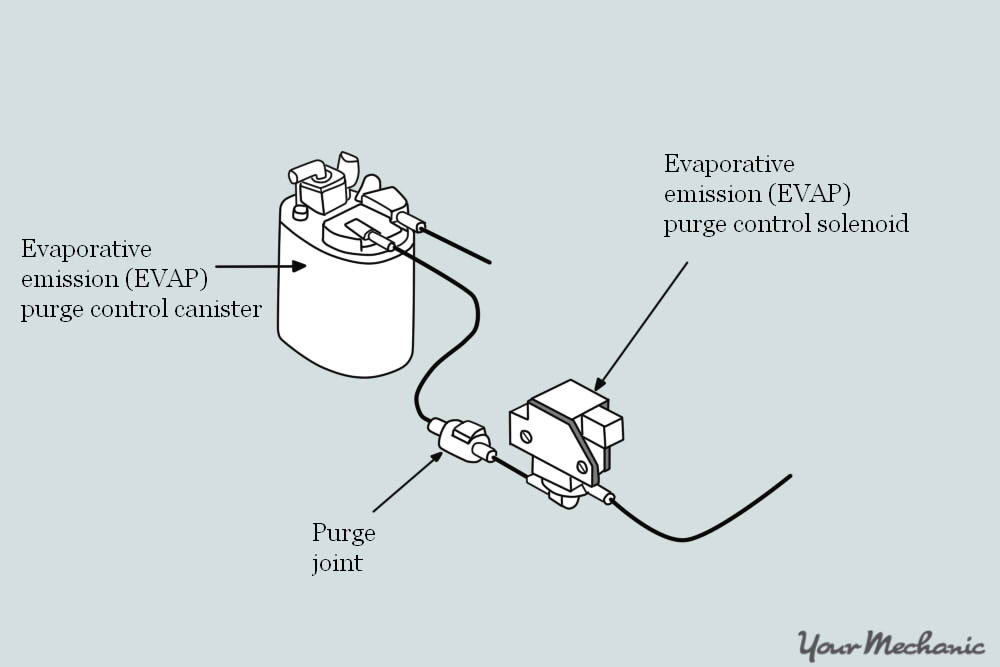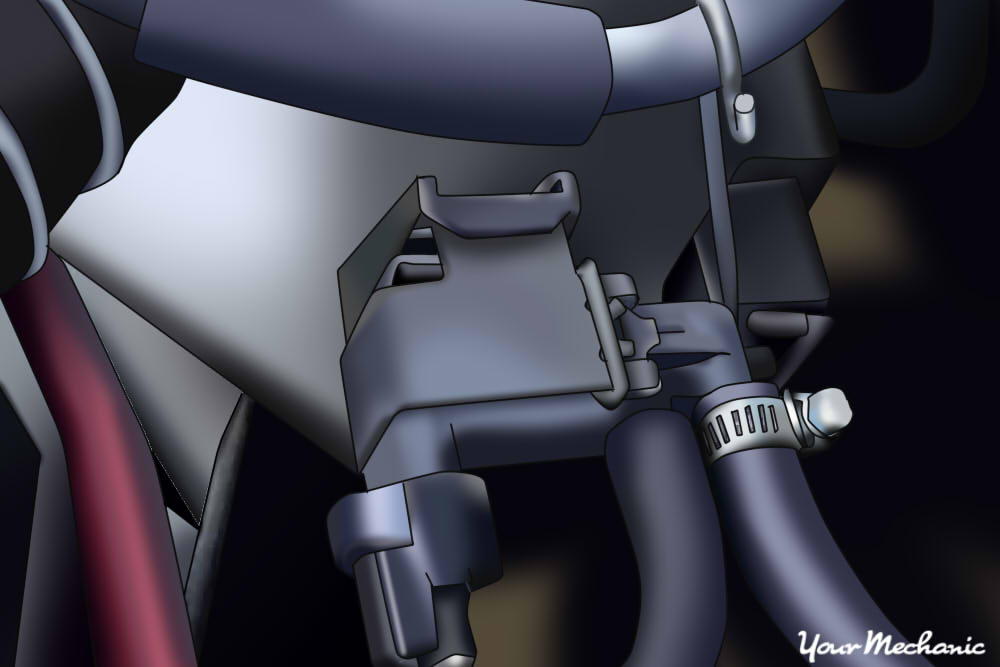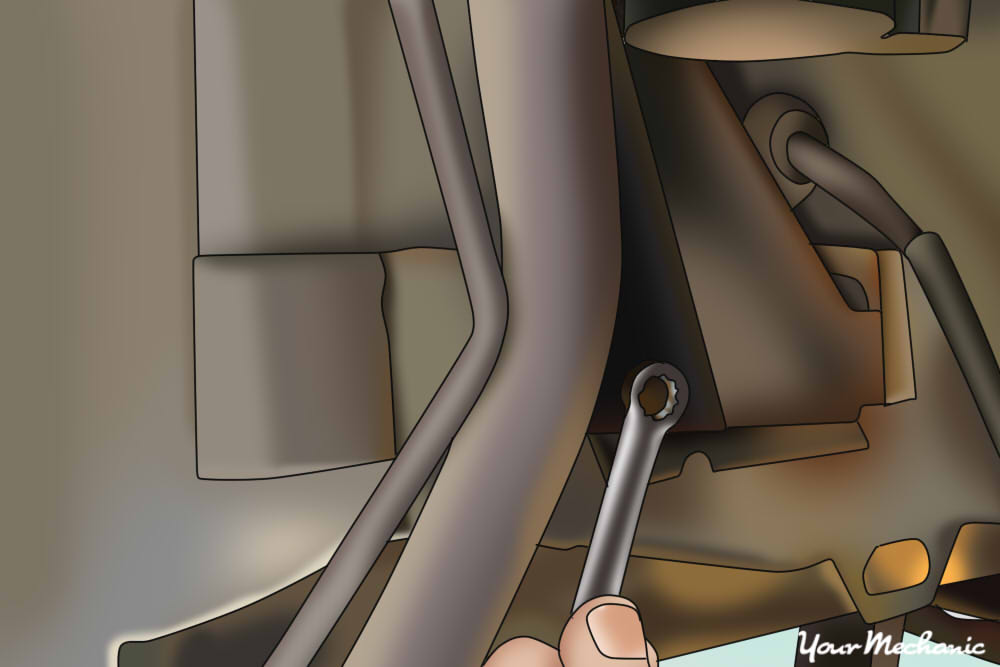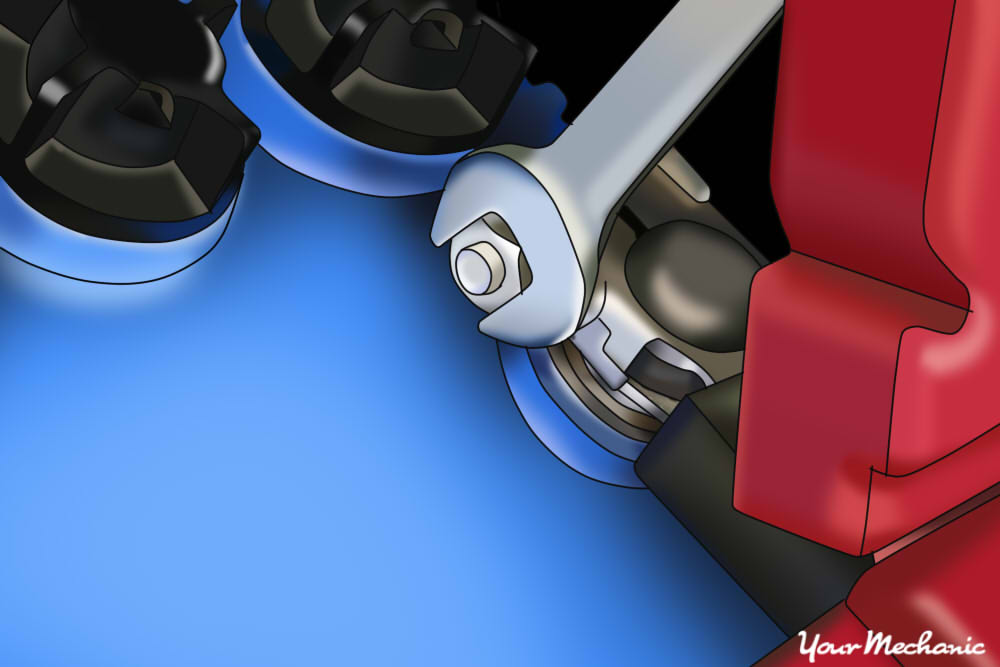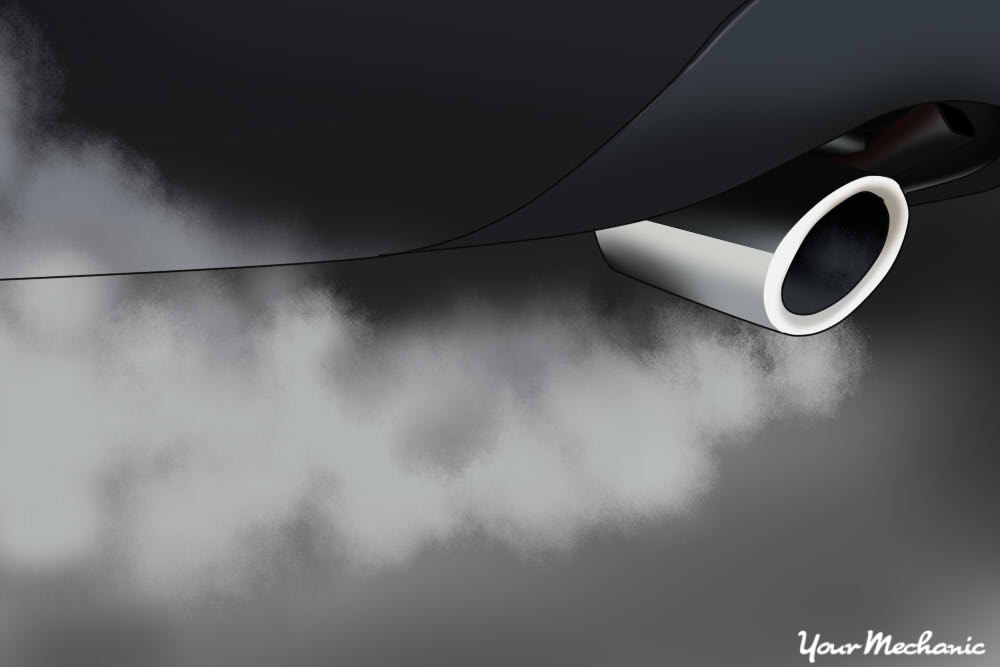

In order to register a vehicle for on-road driving in the United States, the car, truck or SUV must first complete an emissions test. Today's modern vehicles are equipped with multiple emissions control components that work together to reduce gas emissions that reduce air quality and create smog. One of the first lines of defense for controlling vehicle emissions or potentially harmful gas and particles is the evaporation vent solenoid or commonly referred to as an EVAP vent solenoid.
The evaporation vent solenoid is an emissions system component that is engineered to collect and recirculate evaporative emission generated from the EVAP filter which contains carbon that collects unburnt hydrocarbons produced inside the fuel cell. This vapor that enters the filter canister is processed into two separate gases. Hydrocarbon is distributed by the EVAP purge solenoid into the fuel system and burnt during the combustion process. The filtered hydrocarbons are converted to carbon dioxide and released back into the air by the EVAP vent solenoid.
This component is typically in an open position when the vehicle is running and closes when the vehicle is turned off. It works by allowing air into a charcoal-based canister which becomes pressurized when vapor enters the chamber. Once the solenoid is triggered, air is introduced to the EVAP and relieves pressure on most US and domestic cars, trucks and SUV's. When the EVAP vent solenoid works correctly, it can last for the life of the vehicle under normal operation. However, there are multiple reasons why the EVAP vent solenoid can wear out prematurely or fail completely.
When this component fails, it typically triggers an OBD-II error code (0499) that indicates that there is a pressure problem with the EVAP system. The component failure itself prevents fresh air from entering the EVAP system that will negatively impact the operation of the EVAP system. This triggers a check engine light or may cause the vehicle to not start in some worse case scenarios. If the EVAP vent solenoid is malfunctioning, it must be replaced.
- Note: The EVAP vent solenoid is typically located near the rear fuel cell. The solenoid is usually removed in order to fix the problem; however, in some cases, the solenoid is attached to a vent tube that is recommended be replaced at the same time. Please refer to your vehicle's precise service manual for exact instructions and location of the EVAP vent solenoid.
- Note: As we begin to describe the steps to remove and replace the EVAP vent solenoid, we must inform you that the exact location and steps for replacing this component will vary based on your individual vehicle.
Part 1 of 3: Determining the symptoms of a bad EVAP vent solenoid
Before you make the decision to replace any mechanical component, it's very important to verify that you've diagnosed the problem correctly. Typically, when an EVAP vent solenoid begins to fail or has broken, it will produce a few symptoms that alert the driver that a problem exists with this component. However, due to the fact that these symptoms might also be attributed to other parts within the EVAP system, physical inspection or diagnostic scanning is required to pinpoint the broken part.
Some of the warning signs that a problem with the EVAP vent solenoid exists and needs to be replaced may include the following:
Check engine light stays on: The check engine light is the first warning light indicator that reveals a potential problem with the EVAP vent solenoid. This light illuminates if the ECM detects a problem with the EVAP vent solenoid position, signal strength, a leak, or the electrical circuit. If the check engine light comes on, complete a diagnostic scan and look for OBD-II code #0499.
Too much pressure inside the gas tank: A typical physical warning sign of a damaged or malfunctioning EVAP vent solenoid is when there is excess pressure inside the fuel cell. This is noticed when the driver removes the fuel cap from the tank and notices a large burst of air pressure once the cap is loosened or removed entirely. This symptom may also be contributed to excessive heat, as pressure builds up during warm weather conditions naturally. The EVAP vent solenoid helps to remove this pressure in many cases.
Fuel tank appears full when filling: When there is excess pressure inside the fuel tank, filling the vehicle with gasoline is very difficult. In many cases, you'll press the handle on the gas pump and set it to a locked position in order to fill your tank. If this lever clicks shut frequently, it's usually due to excess vapor pressure inside the fuel cell. This could indicate a problem with your EVAP vent solenoid.
A failed emissions test: When you take your car, truck or SUV to the emissions testing facility, the vehicle undergoes a diagnostic scan as well as emissions testing. In many cases, the EVAP vent solenoid breaks or develops a vacuum leak that hinders the operation of the emissions system. The result may include excess levels of particulate matter or NO2 showing up on the emissions report.
Part 2 of 3: Replacing the EVAP vent solenoid
Materials Needed
- Boxed end wrench or ratchet wrench
- Flashlight
- Flat blade screwdriver
- Jack
- Jack stands or hydraulic lift
- Penetrating oil
- Replacement EVAP vent solenoid
- Replacement vent hoses
- Safety glasses
Make sure to wear safety glasses during all phases of this project as the potential for debris falling into your eyes is high when working underneath a vehicle.
Step 1: Disconnect the vehicle's battery. The EVAP vent solenoid is connected to a power connection that supplies the device with electricity in order to trigger the solenoid on and off.
Due to this fact, the first thing that should be done before replacing this part is to disconnect the power supply. Locate the vehicle's battery and disconnect the positive and negative battery cables before proceeding.
Step 2: Raise the rear of the vehicle. In order to gain access to the EVAP vent solenoid, you'll need to elevate the vehicle.
This part is located on the driver side near the rear tires. Jack up the vehicle from the recommended jack placement and place the rear of the vehicle on jack stands for support. Make sure to keep pressure on the jack after lowering the vehicle onto the jack stands for extra safety.
Step 3: Locate bolts and slots that hold EVAP vent solenoid. The EVAP vent solenoid is attached to the vehicle with a single bolt (or two in some cases) and is also attached to a series of slots.
This is where tabs on the vent solenoid slide into for support.
Step 4: Lubricate the bolts and slots with penetrating fluid. Since this component is exposed to the elements, it's possible that the bolt and slots that hold this part onto the vehicle have become rusted.
To avoid stripping bolts, spray penetrating fluid onto the bolts and the rear clips.
Step 5: Remove the electrical harness. Attached to the EVAP vent solenoid is an electrical harness.
Remove this harness by inserting a small, flat blade screwdriver into a slot that contains a small plastic clip. Lower the clip with the screwdriver and carefully remove the electrical harness from the EVAP vent solenoid.
Step 6: Remove vent hoses from the EVAP vent solenoid. There will be two vent hoses that are attached to this component.
One of the hoses runs to the EVAP filter, the other runs to an exhaust line. Most of the time, these hoses are held on by either hose clamps or just slid on. Remove both hoses attached to the EVAP vent solenoid.
Step 7: Remove the bolt holding the EVAP vent solenoid. There is usually one or two bolts that attach this part to the vehicle.
Remove these two bolts using a ratchet, extension and a 10mm socket (in most cases it will be a 10mm).
Step 8: Remove EVAP vent solenoid from clips. In many cases this part is also attached to a series of clips on the backside.
You can gain access to these clips after you remove the EVAP vent solenoid bolts. Using a flat blade screwdriver, carefully depress on the clip and slide the EVAP vent solenoid off the bracket.
Step 9: Remove the old EVAP vent solenoid. After you've released the clips and unbolted the unit, it should come off the vehicle rather simply.
In some cases, there is a secondary ground wire attached to the unit. If this is the case, simply remove the ground wire and the unit will come off.
Step 10: Install the new EVAP vent solenoid. Once the old unit is off the vehicle, you're ready to install the new unit.
To complete this, follow the above instructions in reverse order as indicated below: Slide the EVAP vent solenoid onto clips and attach the solenoid to the bracket with the bolts. Reattach vent hoses and electrical harness
Step 11: Clean up underneath the vehicle. Before you finish the job, make sure to remove all tools, debris and hardware from under the vehicle to avoid running over them with your vehicle.
Step 12: Lower vehicle from jack stands.
Step 13: Reconnect battery cables.
Step 14: Test start vehicle and clear error codes with scanner.
Part 3 of 3: Test driving the vehicle
After you've successfully replaced the EVAP vent solenoid, you'll be ready to test drive your vehicle. Hopefully you wrote down the symptoms that you experienced that led you to replace this component, because the test drive is designed to verify those symptoms have disappeared. A test drive for this repair is actually very short, due to the fact that in many cases, the failure of this part will show up at idle or start up.
Noted below are a few tips for completing a test drive or verifying that this part replacement was completed correctly.
Step 1: Start the vehicle. Let it warm up to operating temperature
Step 2: Check the dashboard. Verify that the check engine light does not come on. If it does, you should shut the vehicle off and complete a diagnostic scan. The error codes will have to be cleared on most vehicles after completing this service.
Step 3: Shut the vehicle off. After verifying that the check engine or other lights are gone, shut the vehicle off.
Step 4: Remove the gas cap. This test verifies that the vacuum is working.
If you remove the gas cap and there is a tremendous amount of vacuum pressure, re-check the lines you connected to the EVAP vent solenoid as they may be crossed.
Step 5: Take the vehicle on a 10 mile road test. Return home and verify that the check engine light does not illuminate.
This job is fairly simple to complete, however, since you're working with the EVAP system and fuel system, there may be a few complex steps. If you've read these instructions and still don't feel 100% confident in completing this repair, please contact one of YourMechanic’s local ASE certified mechanics to complete the evaporation vent solenoid replacement for you.



